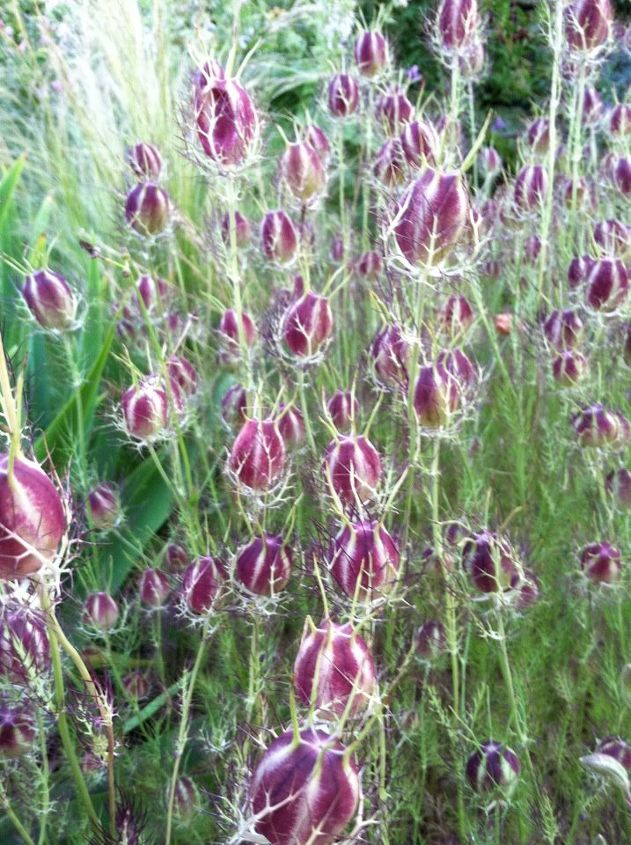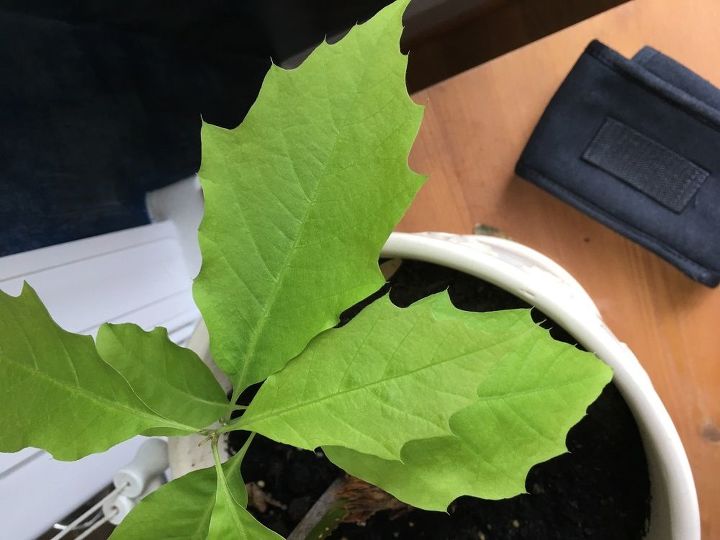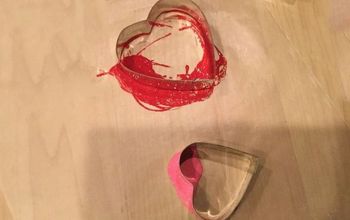Does any one know what kind of plant this is?

-
Is that as open as the flower head gets? Do you have a photo that shows the leaves better?
 Douglas Hunt
on Jun 29, 2012
Helpful Reply
Douglas Hunt
on Jun 29, 2012
Helpful Reply -
-
I think it might be Nigella damascena , also called Love in a mist.Nice picture too.
 Linda R
on Jun 29, 2012
Helpful Reply
Linda R
on Jun 29, 2012
Helpful Reply -
-
I wish I knew! Those are a highly unusual looking bloom, but quite attractive!!
 Becky H
on Jun 29, 2012
Helpful Reply
Becky H
on Jun 29, 2012
Helpful Reply -
-
Linda R is correct. Great plant!
 Walter Reeves
on Jun 29, 2012
Helpful Reply
Walter Reeves
on Jun 29, 2012
Helpful Reply -
-
Love in a Mist (Nigella)
 Kim
on Jun 29, 2012
Helpful Reply
Kim
on Jun 29, 2012
Helpful Reply -
-
Whatever it is, I like it!
 Lilli H
on Jun 29, 2012
Helpful Reply
Lilli H
on Jun 29, 2012
Helpful Reply -
-
Thank you all for responding. A friend from the local gardening shop saw my photo and informed me that it is indeed called 'Love in the Mist' or 'devil-in-the-bush' and the proper name is Nigella damascena. You were spot on Linda R. - Thank you!!! I wish it was my plant, it belongs to a neighbor and he had no idea what it was. :)
 R. P
on Jun 29, 2012
Helpful Reply
R. P
on Jun 29, 2012
Helpful Reply -
-
Love my Love in a Mist and hope it comes back this year, seems as if the False Indigo may have taken it over - along with most everything else. It has become it's own little forest - full of toads ;).
 Jeanne J
on Jun 29, 2012
Helpful Reply
Jeanne J
on Jun 29, 2012
Helpful Reply -
-
this is what it might look like blooming http://www.flickr.com/photos/clamp/179261476/in/pool-nigella/
 Vicki C
on Jun 29, 2012
Helpful Reply
Vicki C
on Jun 29, 2012
Helpful Reply -
-
Providing us with a name is nice, but how about more info.! What zones will it grow in and what are its growing requirements?
 Becky H
on Jun 30, 2012
Helpful Reply
Becky H
on Jun 30, 2012
Helpful Reply- See 1 previous
-
-
From Wikipedia: It is native to southern Europe (but adventive in more northern countries of Europe), north Africa and southwest Asia. It is also commonly grown in gardens in North America. It is found on neglected, damp patches of land. The plant's common name comes from the flower being nestled in a ring of multifid, lacy bracts. It is also sometimes called devil-in-the-bush. It grows to 20–50 cm tall, with pinnately divided, thread-like, alternate leaves. The flowers are most commonly different shades of blue, but can be white, pink, or pale purple; with five to 25 sepals. The actual petals are located at the base of the stamens and are minute and clawed. The sepals are the only colored part of the perianth. The four to five carpels of the compound pistil have each an erect style. The flowers blossom in May and June. The fruit is a large and inflated capsule, growing from a compound ovary, and is composed of several united follicles, each containing numerous seeds. This is rather exceptional for a member of the buttercup family. The capsule becomes brown in late summer. The plant self-seeds, growing on the same spot year after year. They are much used in dried flower bouquets. The flower has been grown in English cottage gardens since Elizabethan times. The most common variety is 'Miss Jekyll' which has blue flowers, but the more recent 'Persian Jewels' is a mixture of white, pink, lavender and blue flowers. 'Persian Rose' is pale pink. Other cultivars are 'Albion', 'Blue Midget', 'Cambridge Blue', 'Mulberry Rose', and 'Oxford Blue'. The 'Dwarf Moody Blue' is around six inches high.
 Cindy P
on Jun 30, 2012
Helpful Reply
Cindy P
on Jun 30, 2012
Helpful Reply -
-
Thanks Cindy!
 Becky H
on Jun 30, 2012
Helpful Reply
Becky H
on Jun 30, 2012
Helpful Reply -
-
Love in the mist. Re-seeds and comes back every year. Mine are blue. Blue flowers first then the seed pods-nice for dry arrangements.
 Sandra Whitmarsh
on Jun 18, 2016
Helpful Reply
Sandra Whitmarsh
on Jun 18, 2016
Helpful Reply -
Related Discussions
GNATS - How to get rid of them?
Somehow my house and garden got tiny gnats that killed my fuchsia plant and fly everywhere. I have tried ALL the Web recommendations - soap and oil dishes, sand in th... See more
Marigolds growing! Should I pinch the buds?
My marigold plants are growing. I heard that pinching the buds until Autumn will allow them to grow without killing the plant. Is this true?
Growing garlic
Growing our first garlic, should we wait until the leaves are drying out before we pick it? Husband picked first one today along with our first potatoes.
How to keep mice out of your garden?
Hi everyone, I have mice in my garden destroying my vegetables and I have also noticed them in the barn and shed. Please can someone tell me how to prevent them from ... See more
What's the best flower/plant to grow in Texas?
I know that opinions vary, but what's your opinion?!I have great luck w Rosemary plants. Green all year long.
Does anyone know what kind of plant this is?
I have several of these volunteering in various places this year. I don't know what it is and it hasn't bloomed yet. In the picture it's the leafy green one in the mi... See more
Does anyone know what kind of tree or bush this is?
Does anyone know what kind of tree or bush this is? It's growing in a planter, which makes me think I may have planted last fall.(This discussion is now closed)





